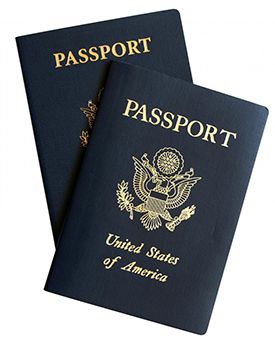Tacikistan hakkında bilgi
Republik of Tajikistan
Total Area: 143,100 sq km
Land Area: 142,700 sq km
Water Area: 400 sq km
Highest Point: Qullai Ismoili Somoni 7,495 m
Lowest Point: Syr Darya (Sirdaryo) 300 m
Capital City: Dushanbe
Independence Day: 9 September 1991
Population: 7,011,556
Languages: Tajik (official), Russian widely used in government and business
Religion: Sunni Muslim 85%, Shi'a Muslim 5%, other 10%
Life Expectancy: 64.47
Currency: somoni
Industries: aluminum, zinc, lead, chemicals and fertilizers, cement, vegetable oil, metal-cutting machine tools, refrigerators and freezers
Exports: aluminum, electricity, cotton, fruits, vegetable oil, textiles
Import: electricity, petroleum products, aluminum oxide, machinery and equipment, foodstuffs
Time: 5 hours ahead of GMT.
The biggest lakes: Issyk-Kul (6236 sq. km), Son-Kul (278 sq. km), Chatyr-Kul (170.6 sq. km).
Tajikistan is a mountainous country. 93% of its territory is surrounded by mountains, referring to the highest mountain systems of Central Asia: Tyan-Shan and the Pamirs. Almost half of the territory of Tajikistan is situated at a height of more than 3000m. The huge mountains are everywhere cut up by a rich network of gorges and canyons, through the bottom of which, the flows of mountain rivers storm.
The climate is continental and is characterised by sharp seasonal and daily fluctuations. The cold winter passes into rainy spring and is quickly replaced by dry summer, with the exception of Pamir. Tajikistan belongs to two climatic areas: Asian and Central Asian.

An average temperature of January in plains and foothills fluctuates from +2 up to 2C. An average temperature of July exceeds 31C in the plains and falls lower +10C. The autumn period is characterised by an unsteady temperature (from -3-5 up to 36+38C). The annual course of humidity depends on the air temperature. An annual amount of sediments reaches 200mm in the central regions. In deep hollows and narrow valleys, a number of sediments decreases up to 100-300m per year. An average annual amount of the sediments reaches 1200mm in Pamir. The types of sediments are various: the snow is 15-20% per year, high in the mountains up to 100%. The mountain winds occur only high in the mountains.

An average density of population in Tajikistan is 42,1 men for 1 sq. km.. Richly are occupied the Gissar and Vaksh valleys and Khujand region . More over 85% of the population live in valley regions ( making 35% of the territory of the republic). The part of living here of urban population reaches 95% . In 90th years not least 35% of population of the republic lived in towns.(65% lived in the rural area).
Tajikistan is a multinational state. A great part of its population (70%) make the Tajik prevailing in all the regions of the republic. The Uzbek, Russians, Tatar, Ukrainians, Kirghis, Turkmen, Kazakh Beludgy, Arab, Central Asian`s Gypsies and the Jews live also in the territory of Tajikistan. The mountainous Badakhshan is populated by Pamir nationalities ( frequently named the mountainous Tajik). The language they speak refers to the Pamir group of east branch of the Iranian languages.

The tajik(the self-name Tojik) speak tajik which refers to the south-west group of the Iranian languages. Besides the republic of Tajikistan they also live behind its limits. In Uzbekistan ( where the Tajik on the official data, make about 4% of the population of this republic) are settled in the valleys of rivers Zerafshan , Shirbadarya, Sokh ( to the south from Kokand ), on the right inflows of the river Surkhandarya, in the upper Kashkadarya and other areas . A considerable tajik population are in cities Samarkand and Bukhara. In the north-east of Afghanistan live over 3.5 million tajik. They also live in the frontier regions of Kirgizia , south-west of Kazakhstan historic province of Khorasan in the north-west of Iran.
According to the Constitution of Tajikistan, the state language of the republic is Tajik language. The Constitution, at the same time, guarantees all the people living in Tajikistan the right and the opportunity to use freely their native language. Tajik language ("zaboni tojiki") is a native language both for beludges living in Tajikistan and the Centralasian's Jews. The people of Pamir use Tajik language as literary one. The language of interethnic dialogue - first of all in northern, Centralasian's southwest regions of the country ( despite of the outflow of the considerable part of Russian -speaking population) - remains Russian language , about 30% of the ethnic Tadjiks and a considerable part of the representatives of other people mastered it in 80th years. In the mountainous Badakhshan the functions of the language of an interethnic dialogue fulfill Tajik . It is mainly connected with that a great part of the population of mountainous Badakhshan ( with the exception of Murgob) make Tajiks . The language of the mass media ( newspapers, radio and television) with Tajik language are Russian and Uzbek languages.












 Kazakistan
Kazakistan Kirgizistan
Kirgizistan Özbekistan
Özbekistan Tacikistan
Tacikistan Turkmenistan
Turkmenistan